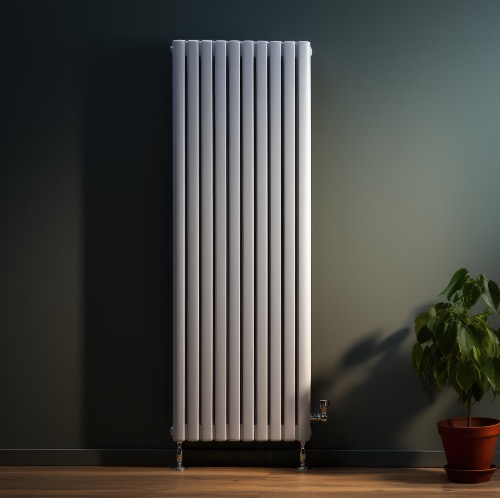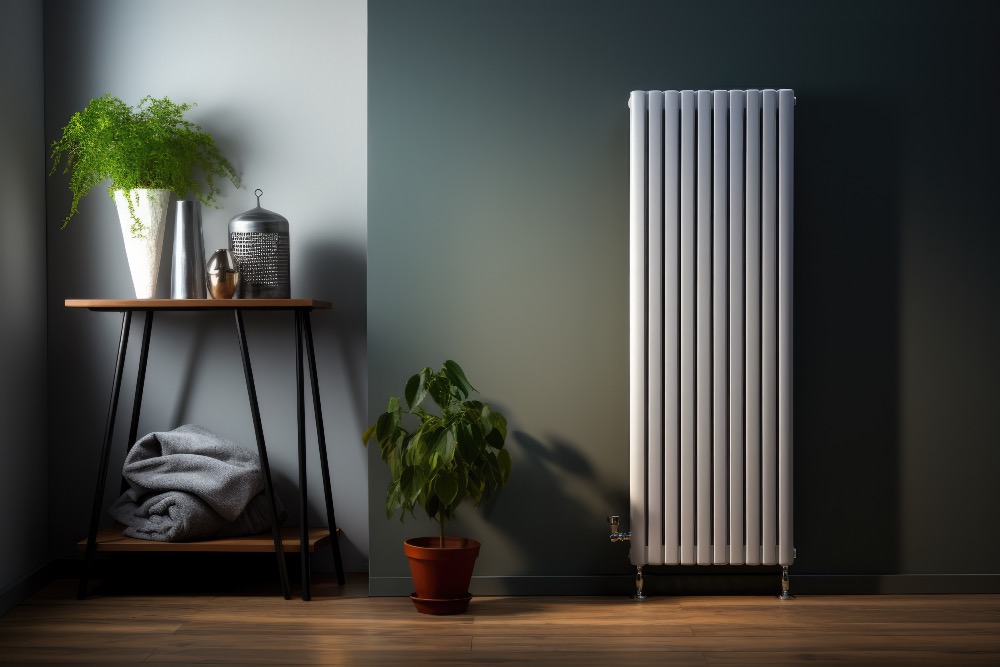Last Updated: Saturday, 10th February 2024
Air Source Heat Pumps and Radiators - What You Need To Know
As the green economy gathers an ever greater pace, in the realm of sustainable heating solutions, Air Source Heat Pumps (ASHPs) have emerged as a frontrunner to provide a highly efficient heat source for heating, cooling and hot water by harnessing the power of ambient air.
But how do they integrate with traditional heating elements like radiators? Let's take a close look at the relationship between Air Source Heat Pumps and Radiators to help you understand how they can work for you.
The Basics of Air Source Heat Pumps

The principals of an Air Source Heat Pumps are shown in the diagram above. They extract heat from the outside air, even in cold temperatures, and deliver it to you in your home. They do this by drawing external air over refrigerant, which is then compressed which increases the pressure and temperature causing it to change from a cold gas to a hot liquid. This hot liquid passes through a heat exchanger to transfer the heat to your central heating system. The hot refrigerant then expands to be pick up more heat from the external air.
The beauty of ASHPs lies in their efficiency; they can deliver up to three times more heat energy than the electrical energy they consume.
Radiators and Air Source Heat Pumps: A Perfect Match?
Confusion often arises when trying to understand if Air Source Heat Pumps (ASHPs) are compatible with conventional central heating radiators. The crux of this issue lies in the temperature difference between the two systems. ASHPs are designed to achieve water temperatures of 50-55°C, whereas boilers are optimal around 60-65°C. Consequently, the current technology of ASHPs falls short of reaching the design temperature required for optimal radiator performance within a household.
A workaround for this is to use larger radiators within your living space to compensate for this temperature limitation. However, it is worth noting that radiator design typically incorporates a margin of safety, resulting in oversized radiators being installed in any case. So after all, it could be that your radiators will be fine after all.
Alternatively, you could opt for a hybrid approach. This option combines the benefits of an efficient ASHP with the supplementary output of a boiler. Such systems are ideal for houses that have a high head demand.
The Benefits of Combining ASHPs with Radiators
Sustainable Heating: ASHPs are a green alternative to traditional heating systems, reducing your carbon footprint. When combined with radiators, homeowners can enjoy sustainable heating without compromising and the ease of simply switching out their boiler rather than anything more complicated.
Cost Savings: ASHPs can lead to substantial savings on energy bills over the medium to long term.
Flexibility: Modern ASHPs are designed to work seamlessly with various heating solutions, including underfloor heating and radiators. This flexibility allows homeowners to choose the best combination for their needs.
Where to go next..
Air Source Heat Pumps and radiators, when combined, offer a sustainable and efficient heating solution for homes. By understanding their workings and ensuring the right setup, homeowners can enjoy a warm home while contributing to a greener planet.
If you are still struggling with any of this, the easiest solution may be to recruit a heat pump engineer to help you through the complicated decisions. You can find a list of recommended engineers here.
If you have the BTU requirements figured out, feel free to explore our range of radiators. You'll find a variety of stylish options that are designed to match your needs perfectly.
Frequently asked questions
Are ASHPs compatible with traditional central heating radiators?
ASHPs are compatible with radiators, but you do need to check that your radiators will operate efficiently with your heat pump. Depending on its heat output, the performance of your radiators may be impacted.
Can larger radiators compensate for the temperature difference between ASHPs and boilers?
Using larger radiators might help compensate for the lower operating temperatures of ASHPs. However, radiators are often designed with a safety margin, so your existing radiators may already work well with your choice of Air Source Heat Pump.
Can ASHPs be integrated with existing radiator systems?
Yes, modern ASHPs are designed to integrate with various heating solutions, including existing radiator systems.
Any more questions?
If you have any queries or questions about the products we sell, or even your next project, give us a shout! We'll try our best to give you a hand.

